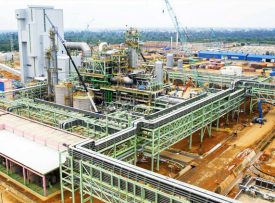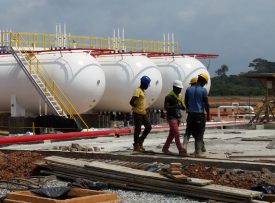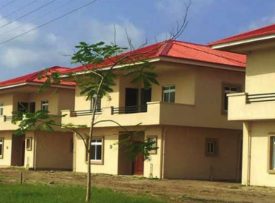Our sectors
Infrastructure provision is a driver of economic development: increasing access to energy powers businesses, and improved transport opportunities enable better access to markets and greater labour mobility.
To deliver pioneering infrastructure that seeks to combat poverty in the poorest and most fragile countries, we focus on the following sectors.
PIDG commitments by sector: 2018 ($m)
| $m | |
| Energy | 151.7 (41.2%) |
| Transport | 75.0 (20.3%) |
| Multisector | 50.5 (13.7%) |
| Housing | 36.2 (9.8%) |
| Urban development / infrastructure | 29.0 (7.9%) |
| Agri-infrastructure | 24.6 (6.7%) |
| Capital market development | 1.4 (0.4%) |
| Water, Sewerage and Sanitation | 0.2 (0.1%) |
| Telecoms | - |
| 45 projects | 443 |
| (including 20 TAF grants totalling $11m) | |
| As at 31 December 2018 | |
Of the commitments made by PIDG to new projects in 2018:
36%
were to projects in Fragile and Conflict-Affected States
8%
were to projects in Least Developed or Other Low-Income Countries (OLIC)
PIDG commitments by sector: cumulative ($m)
| $m | |
| Energy | 1,461.0 (40.5%) |
| Transport | 555.1 (15.4%) |
| Telecoms | 520.4 (14.4%) |
| Industrial infrastructure | 447.4 (12.4%) |
| Multisector | 168.5 (4.7%) |
| Agri-infrastructure | 150.6 (4.2%) |
| Housing | 142.2 (3.9%) |
| Water, Sewerage and Sanitation | 85.3 (2.4%) |
| Mining | 46.2 (1.3%) |
| Urban development/ infrastructure | 30.2 (0.8%) |
| Capital market development | 4.1 (0.1%) |
| 438 projects | 3,610.9 |
| (including 164 TAF grants totalling $67.6m) | |
| As at 31 December 2018 | |
Of the commitments made by PIDG to new projects since 2002:
49%
were to projects in Fragile and Conflict-Affected States
42%
were to projects in Least Developed or Other Low-Income Countries (OLIC)
Results Monitoring Database

Select, customise and analyse development impact data from all PIDG-supported projects to meet your own requirements.
Explore our dataOur sectors: Click the tiles below to explore our sector expertise
-

Agri-business/Infrastructure
Agri-business is most clearly linked to SDGs related to reducing hunger and ending poverty, but it is also critical to protecting livelihoods, achieving gender equality and fulfilling education.
-

Capital Market Development
The demand for capital from the private sector is growing in frontier and emerging markets, driven by high rates of economic development.
-

Digital Communications Infrastructure
Technological progress is key to finding lasting solutions to both economic and environmental challenges, such as providing new jobs and promoting energy efficiency.
-

Energy
Modern, affordable, reliable and sustainable energy is critical for economic growth.
-

Manufacturing
Manufacturing is critical for a country’s development; to support the creation of jobs; to increase innovation; to sustain higher economic growth and progress in structural change; and to achieve long-term prosperity.
-

Social Infrastructure
PIDG may invest in social infrastructure, which complements the other traditional sub-sectors that are normally associated with infrastructure.
-

Transportation
Transport is an essential part of our everyday lives and is central to sustainable development.
-

Water, Sewerage and Sanitation
Our investments in the water, sewerage and sanitation sector contribute directly to SDG 6, ‘clean water and sanitation’ and support the provision of universal access to safe drinking water and sanitation for all.
$3.6bn committed to support 157 projects in over 40 countries








